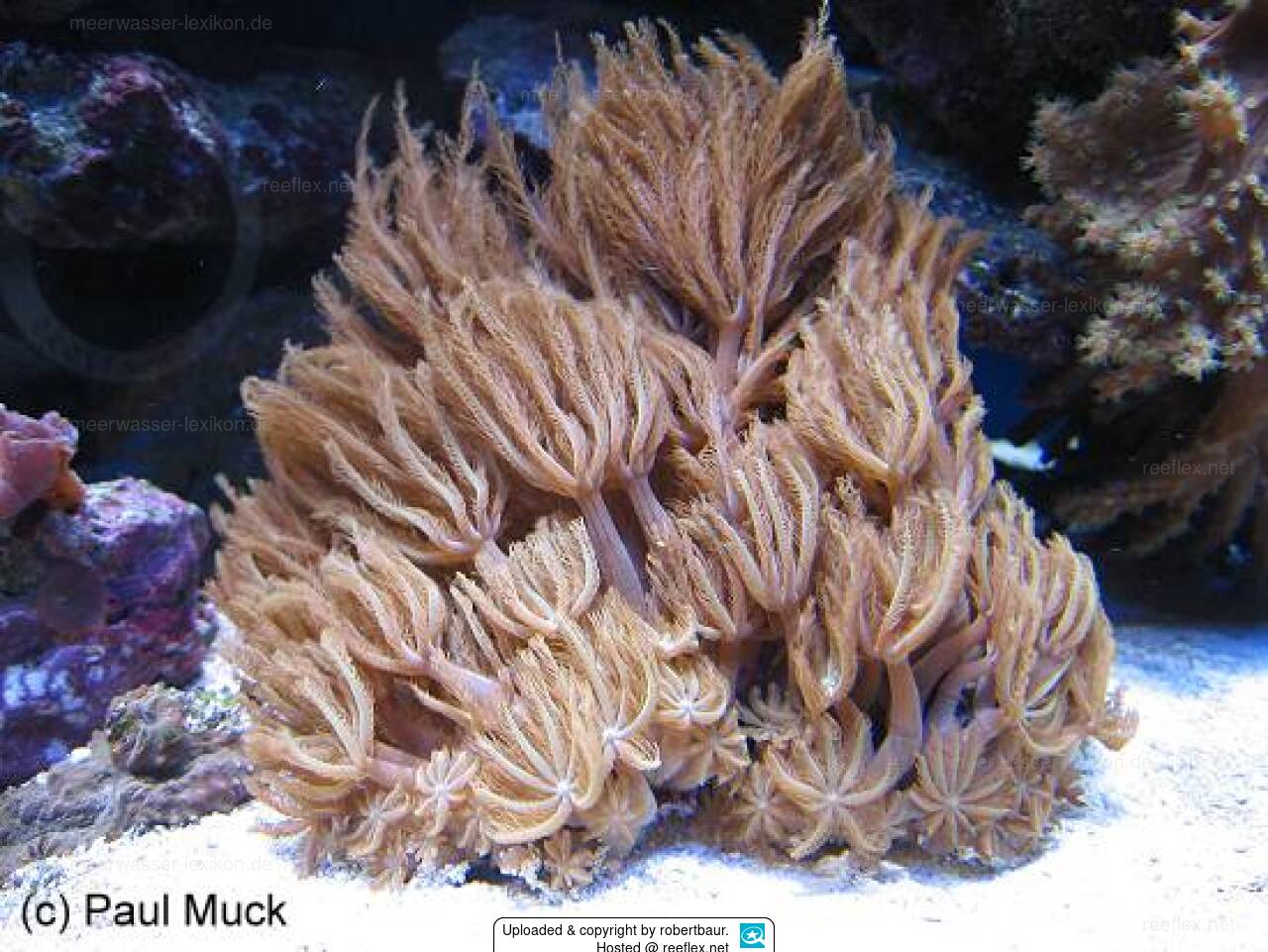Info
A beginner's coral that is unfortunately not often found in the trade.
The coral is very adaptable and is very hard on the water values. With optimum water values, the coral usually grows quite quickly in medium to strong light and does not require extra feeding. The current should be moderate and preferably irregular so that the animal moves easily in the current.
They are somewhat sensitive to cyanobacteria or algae growth.
Caution
Anthelia reproduces by detaching whole polyps or tiny polyp fragments throughout the tank and can thereforequickly become a nuisance and cause distress to other corals or can settle in the spaces between other corals. It therefore makes no sense to position this coral on a separate reef rock at the bottom or in the reef structure itself.
The coral is very adaptable and is very hard on the water values. With optimum water values, the coral usually grows quite quickly in medium to strong light and does not require extra feeding. The current should be moderate and preferably irregular so that the animal moves easily in the current.
They are somewhat sensitive to cyanobacteria or algae growth.
Caution
Anthelia reproduces by detaching whole polyps or tiny polyp fragments throughout the tank and can thereforequickly become a nuisance and cause distress to other corals or can settle in the spaces between other corals. It therefore makes no sense to position this coral on a separate reef rock at the bottom or in the reef structure itself.







 robertbaur
robertbaur















